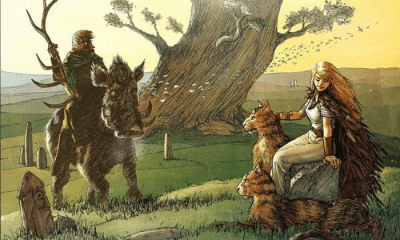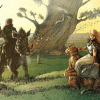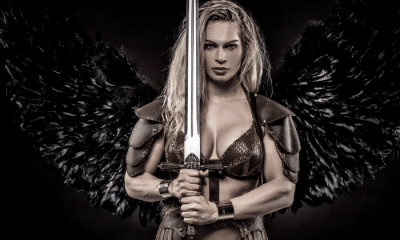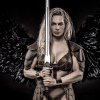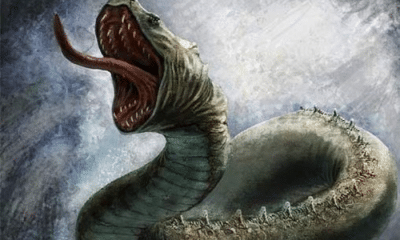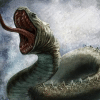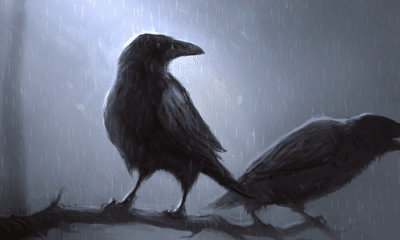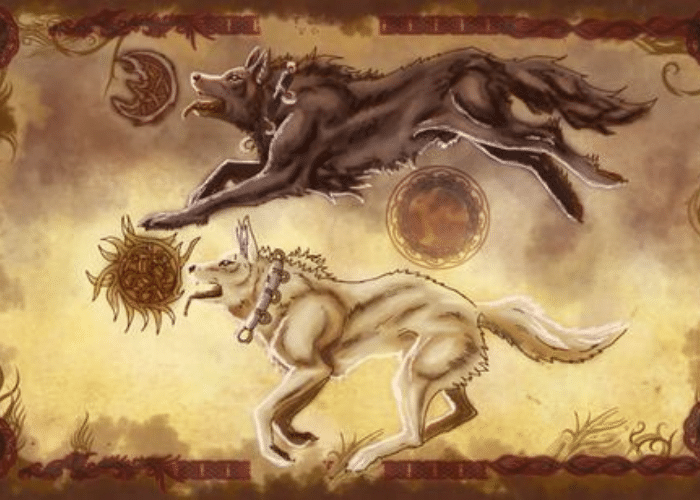
Norse
Sköll and Hati: The Norse Wolves of Darkness
Sköll and Hati: The Norse Wolves of Darkness
In Norse mythology, Ragnarök would be the end of more than just the gods and men. The entire world would be destroyed and two wolves, Sköll and Hati, would ensure that not even light survived.
Many of the enemies faced by the Norse gods took the form of wargs, or giant wolves.
The most famous of these was Fenrir, Loki’s vicious son who would kill Odin and the armies of Valhalla on the day of Ragnarök.
The Norse people believed that Fenrir was bound by strong chains until that day came, however. His children were not.
Sköll and Hati were a sister and brother who chased the sun and moon across the sky. At Ragnarök, they would finally catch their prey and darkness would come over the ruins of the world.
Sköll and Hati at the End of the World
Hati and Sköll were two wolves, brother and sister, who ran across the sky. Hati chased the moon and Sköll went after the sun.
Each of these sources of light was personified by a chariot-driving deity. Sól, called Sunni in German, drove the sun while her brother Máni drove the moon.
As they each went across the sky they were chased by one of the giant wolves. Every day and night Sól and Máni raced to avoid capture by the wolves at their heels.
Sköll and Hati were not the only giant wolves who threatened the gods.
Fenrir was one of the monstrous children of Loki. Realizing he was dangerous, the gods had bound him with chains. He was so vicious that he bit off Tyr’s hand as the gods tried to capture him.
It was said that Fenrir would break free as Ragnarök began. Odin and the warriors of Valhalla would all be killed fighting him until he would finally be slain by Odin’s son Viðarr.
Loki’s son was so well-known for the danger he presented that he was given the alternative name Hróðvitnit, or “Famous Wolf.” Hati was called Hróðvitnisson, “Son of the Famous Wolf.”
Fenrir had, presumably before his binding, fathered many children with an unnamed giantess who lived in the forests of eastern Midgard. Many were the wolves and monsters who prowled the world but the two strongest, Hati and Sköll, were sent after Sól and Máni.
Not only would their father escape when Ragnarök came, but the two wolves in the sky would also succeed in their quest. Hati would swallow Sól and Sköll would devour Máni, bringing darkness to the world.
Afterward, Norse poets claimed that Hati’s hunger would still not be abated. He would come down to land and eat all the dead of the world as Ragnarök killed them.
The Prose Edda, however, ends the story of Ragnarök with the promise that the world will be reborn after its destruction. A few gods would survive to establish a new pantheon and one human couple would hide in Yggdrasil’s branches until the danger passed.
Before being caught, Sól would give birth to a daughter. This new goddess would grow to be as lovely as her mother and soon take her place to give light to the reborn world.
My Modern Interpretation
Sól and Máni belong to a very well-known archetype of deities who personify the sun and moon, often as charioteers or boaters. Other examples include the Greek Helios and Selene, Chandra and Surya in Hinduism, and the boat of Ra in Egyptian mythology.
Norse mythology, however, places particular emphasis on the sun and moon being chased and eventually devoured by unseen entities. Some scholars, however, believe that Sköll and Hati may not have been entirely unseen.
Instead, they believe that the two wolves may have been inspired by a specific optical phenomenon that is sometimes seen in the atmosphere in cold weather.
When sunlight refracts through ice crystals in the atmosphere it can sometimes produce what is known as a halo. This is most often visible as a ring of light around the sun that can appear white, blue, or even red depending on conditions.
Similar rings, known as moon rings or winter halos, can also appear around the moon at night.
While high clouds can be cold enough to form ice crystals in any region, halos can also be formed by freezing air at lower levels. This makes them particularly common in colder climates.
Sometimes ice crystals float downward from the higher regions of the atmosphere. When this happens they can refract the sun’s light outward, giving the appearance of bright points of light to the left and right of the sun itself.
In English, this bright light is called a sundog. In Swedish it is a solvarg, or “sun wolf.”
Some historians theorize that the appearance of sundogs may have inspired the story of Hati and Sköll. The lights that seemed to follow the sun and moon were imagined as hunting wolves stalking their prey.
The fact that only English and the Scandinavian language use this imagery when talking about halos gives credence to this idea. They are solhund or solhunde in modern Norwegian and Danish, respectively.
It is possible that the Norse explanation for an unusual atmospheric event inspired the term that is used in these modern languages. The occasional appearance of a sun dog might bring to mind the ancient threat of the sun and moon being devoured by Fenrir’s terrible children.
In Summary
Hati and Sköll were two great wolves in Norse mythology. They were children of Fenrir, the murderous wolf that was born to Loki and Angrboða.
The two wolves ran across the sky. Sköll chased the chariot of the moon god, Máni, while her brother followed the sun goddess Sól.
According to prophecies, the two wolves would catch their prey during Ragnarök. The sun and moon would be swallowed and the world would be plunged into total darkness.
Some accounts gave hope, however, that this would not be eternal. Before her death, Sól would give birth to a daughter who would take her place in the sky when the world was reborn.
Sól and Máni fit into a common Indo-European archetype, but the wolves that chased them seem more uniquely Scandinavian. While their origins are unclear, some historians believe that they were at least in part inspired by an atmospheric phenomenon.
Sundogs, as they are known in English, appear as spots of light to either side of the sun. Caused by ice crystals in the atmosphere, they can appear anywhere on Earth but are particularly common in cold areas like Scandinavia.
Sköll and Hati may have been inspired by these spots that can appear to follow the sun or moon over the horizon. The modern terms for these bright lights in English and Scandinavian languages may recall the ancient belief that they were beasts who chased the chariots of the sun and moon.


